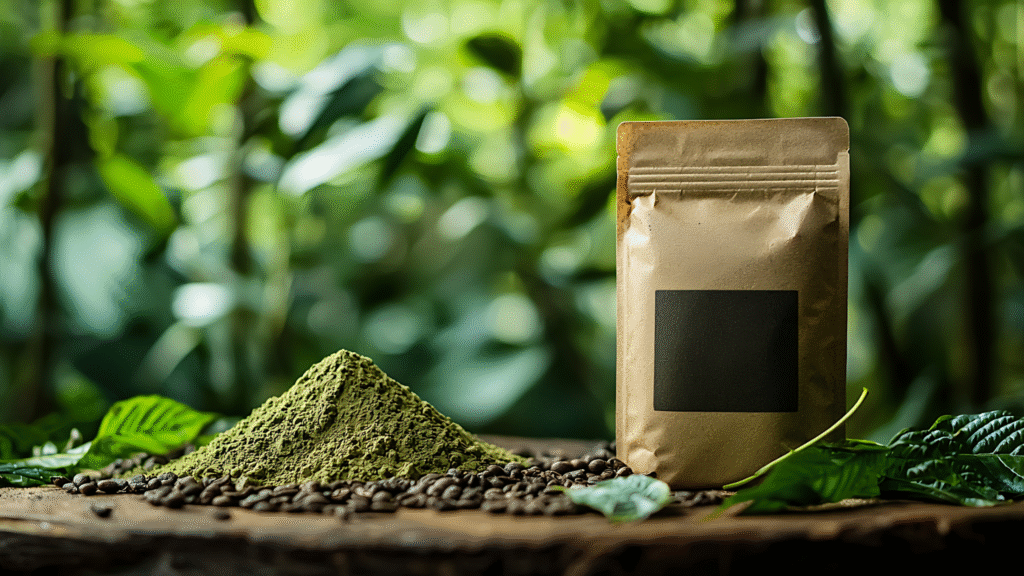You’ve probably heard about kratom by now. Whether it was from a friend, an article online, or maybe even right here in our shop, this botanical has been making waves for a while. But with all the buzz, there’s also a lot of misinformation floating around. We get it—when something becomes popular, it’s easy for myths and misconceptions to take hold. But what if we told you that kratom is not just a simple plant, but a complex and fascinating one? Let’s delve into its intricacies and separate fact from fiction.
At our core, we believe in being open and honest. We’re not just here to sell products; we’re here to provide you with the information you need to make smart, informed choices. That’s why we’re taking a closer look at some of the most common myths about kratom and setting the record straight. Let’s get into it and separate fact from fiction.
Myth #1: Kratom is an Opioid
This is perhaps the most widespread and significant misconception out there. It’s often at the center of a lot of the debates and discussions surrounding kratom.
The Reality: Kratom is not an opioid. It comes from the leaves of the Mitragyna speciosa tree, a tropical evergreen native to Southeast Asia. This tree is in the coffee family, not the poppy family, from which opioids are derived.
So why the confusion? The main active compounds in kratom, mitragynine and 7-hydroxymitragynine, interact with the same brain receptors as opioids. This is why it can have similar effects, but the way it interacts with these receptors is fundamentally different. Unlike traditional opioids, these compounds are considered “partial agonists.” Think of it this way: an opioid is like a key that fits perfectly and turns the lock all the way, while kratom is a key that only fits partially and turns the lock just a little. This difference in action is what makes kratom’s effects distinct from those of true opioids.
Myth #2: Kratom is a “Legal High”
Another common myth is that people use kratom to get “high” in the way they would with illicit substances. While kratom can have stimulating or relaxing effects depending on the strain and dosage, this label oversimplifies its true nature and purpose for many users.
The Reality: Most people don’t use kratom for a euphoric “high.” They use it for its various wellness properties. In lower doses, many users report a sense of increased energy and focus, similar to the effects of coffee. At higher doses, it can be more relaxing and soothing. The experience is typically described as subtle and nuanced, not an intense high that impairs cognitive function or daily life. Calling it a “legal high” is a misnomer that paints an inaccurate picture and often sensationalizes its use.

Myth #3: All Kratom is the Same
If you’ve ever stepped into our shop, you’ll know this isn’t true. The vast array of colors and strain names can be a bit overwhelming at first.
The Reality: Kratom comes in many different strains, which are categorized by the color of the leaf vein—most commonly red, white, and green. Each of these types has a unique alkaloid profile that can lead to different effects.
- Red vein kratom is typically associated with more relaxing and soothing effects. It’s popular for those looking to unwind.
- White vein kratom is known for its more uplifting and stimulating properties, often used by people looking for a boost in energy and mood.
- Green vein kratom is often seen as a middle ground, offering a balanced mix of both stimulating and relaxing effects. It’s an excellent choice for those new to kratom who want to experience a broad range of its benefits.
Even within these categories, there are countless strains named after their origin (e.g., Maeng Da, Bali, Borneo), which can have subtle variations in their effects. Saying all kratom is the same is like saying all types of tea or coffee taste alike—it’s just not accurate.
Myth #4: Kratom is Addictive and Dangerous
This is a serious concern for many, and it’s a topic that deserves a thoughtful and honest discussion.
The Reality: Like coffee, nicotine, or many other substances, kratom has the potential for dependence, especially with frequent, long-term, and high-dose use. However, the reliance experienced by many users is often described as milder than that associated with more complex substances. Withdrawal symptoms, when they occur, are generally reported as being more akin to those of caffeine withdrawal, such as mild fatigue, irritability, and muscle aches. It’s not a harmless substance and should be treated with respect. Still, the claims that it is universally and severely addictive are often overblown.
As for safety, the vast majority of adverse reports about kratom have been linked to adulterated products or extremely high-dose use, often in combination with other substances. When sourced from a reputable vendor (like us!) and used responsibly, the risk is significantly lower. The key is to know your source and start with a low dose to see how your body reacts. We’re always here to guide you and answer any questions you have about proper use.

Myth #5: Kratom Has No Scientific Evidence to Back Its Use
In a world that loves scientific data, the idea that kratom is just a folk remedy with no proof behind it is a common refrain.
The Reality: While kratom research is still in its early stages in the West, there’s a growing body of scientific literature on its effects and compounds. Researchers are actively studying mitragynine and 7-hydroxymitragynine to understand their potential applications in medicine. The U.S. National Institutes of Health (NIH) has even funded research into kratom’s properties. So, while it’s true that we need more comprehensive studies, the idea that it’s completely unstudied or that there’s no scientific interest is simply false. This field of research is evolving rapidly, and we can expect to see more findings in the coming years.

